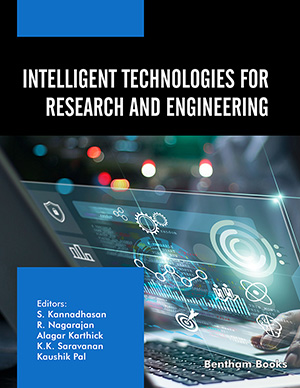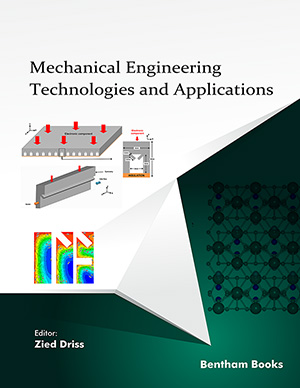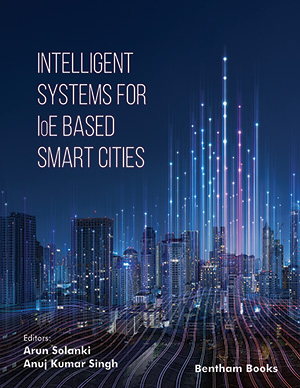
Abstract
The Power grid is one of the most important manifestations of modern civilization. It is a structure having three main functions: generation, transmission lines, or distribution. This concept was appropriate for a century. However, the beginning of the twenty-first century brought dramatic changes to different domains: media, human growth, economic, environmental, political, technical, etc. Smart grid is a sophisticated structure, including cyber and physical bodies; hence it reinforces sustainability, energy management, capabilty of integration with microgrids, and exploiting the renewable energy resources. The quantum leap of a smart grid is related to the advanced communication networks that deal with the cyber part. Moreover, the communication networks of smart grid offer attractive capabilities such as monitoring, control, and protection at the level of real time. The wireless communication techniques in the integration frame are promised solutions to compensate the requirements of a smart grid designing such as wireless local area networks, worldwide interoperability for microwave access, long-term evolution, and narrowband-internet of things. These technologies could provide high capacity, flexibility, low-cost maintenance of the smart grid. However, the multi-interfaces in the smart grid may be exploited by persons or agencies to implement different types of cyberattacks that may lead to dangerous damage. This research paper reviews the upto- date researches in the field of smart grid to handle the new trends and topics in one frame in order to offer an integration vision in this vital section. It concentrates on the section of communication networks, the mainstay of the smart grid. This paper discusses challenges and requirements of adopting wireless communication technologies and delves deeply into literature review to devise and suggest solutions to compensate the impairments efficiently. Moreover, it explores the cyber security which representing the real defiant to implement the concept of smart grid safely.
Keywords: Applications, cyberattacks, LTE, smart grid, WiMAX, wireless networks trends.
[http://dx.doi.org/10.1007/978-1-4471-6302-2]
[http://dx.doi.org/10.1002/9781118653722]
[http://dx.doi.org/10.1002/9781119240136]
[http://dx.doi.org/10.1007/978-3-662-60930-9]
[http://dx.doi.org/10.1002/9781119360124]
[http://dx.doi.org/10.1109/WCNC.2015.7127800]
[http://dx.doi.org/10.3390/en10111782]
[http://dx.doi.org/10.1016/j.comnet.2014.03.029]
[http://dx.doi.org/10.1002/9781119484196]
[http://dx.doi.org/10.1016/j.cosrev.2018.08.001]
[http://dx.doi.org/10.1007/978-3-319-93677-2]
[http://dx.doi.org/10.1016/j.jnca.2019.02.022]
[http://dx.doi.org/10.1016/j.comnet.2019.107094]
[http://dx.doi.org/10.1109/CYBERSEC.2016.013]
2015 [http://dx.doi.org/10.1109/SECON.2015.7132891]
[http://dx.doi.org/10.1109/ISGTEurope.2011.6162695]
[http://dx.doi.org/10.1109/ICSGCE.2015.7454291]
[http://dx.doi.org/10.1109/ICCIC.2013.6724272]
[http://dx.doi.org/10.1109/IFOST.2014.6991093]
[http://dx.doi.org/10.1109/MoWNet.2016.7496613]
[http://dx.doi.org/10.1109/ICCSP.2014.6949949]
[http://dx.doi.org/10.1109/TSG.2016.2536145]
[http://dx.doi.org/10.1109/SEGE.2016.7589547]
[http://dx.doi.org/10.1109/FSKD.2016.7603496]
[http://dx.doi.org/10.1016/j.ijepes.2017.11.014]
[http://dx.doi.org/10.1109/SmartGridComm.2018.8587472]
[http://dx.doi.org/10.1109/ICIT.2018.8352370]
[http://dx.doi.org/10.1109/WOCN45266.2019.8995127]
[http://dx.doi.org/10.1109/TDC.2014.6863432]
[http://dx.doi.org/10.23919/AEIT.2017.8240558]
[http://dx.doi.org/10.1109/JIOT.2017.2781251]
[http://dx.doi.org/10.1109/SmartGridComm.2019.8909773]
[http://dx.doi.org/10.1109/SGMS.2011.6089018]
[http://dx.doi.org/10.1109/ISGT-Asia.2014.6873782]
[http://dx.doi.org/10.1109/U-MEDIA.2014.49]
[http://dx.doi.org/10.1109/CAMAD.2014.7033216]
[http://dx.doi.org/10.1109/SGCF.2015.7354914]
[http://dx.doi.org/10.1016/j.renene.2015.06.044]
[http://dx.doi.org/10.1016/j.osn.2016.12.003]
[http://dx.doi.org/10.23919/DUE.2017.7931854]
[http://dx.doi.org/10.1109/ICSGSC.2019.00-16]
[http://dx.doi.org/10.1109/ACCESS.2020.2975879]
[http://dx.doi.org/10.1016/j.procs.2019.08.057]
[http://dx.doi.org/10.1016/j.scs.2020.102018]
[http://dx.doi.org/10.1016/j.jpdc.2020.05.012]
[http://dx.doi.org/10.1016/j.patrec.2020.07.020]
[Epub ahead of print]. [http://dx.doi.org/10.1016/j.eng.2020.06.018]
[http://dx.doi.org/10.1016/j.jpdc.2020.08.012]
[http://dx.doi.org/10.1016/j.ress.2019.106683]
[http://dx.doi.org/10.1016/j.future.2019.05.069]
[http://dx.doi.org/10.1016/j.iot.2019.100116]
[http://dx.doi.org/10.1016/j.epsr.2019.106024]
[http://dx.doi.org/10.1016/j.future.2020.06.001]
[http://dx.doi.org/10.1109/ISIE.2018.8433816]
[http://dx.doi.org/10.1016/j.cose.2018.03.011]
[http://dx.doi.org/10.1016/j.ijcip.2018.05.006]
[http://dx.doi.org/10.1016/j.ijcip.2019.01.001]
[http://dx.doi.org/10.1016/j.iot.2019.100111]
[http://dx.doi.org/10.1016/j.jisa.2020.102500]
[http://dx.doi.org/10.1016/j.suscom.2020.100427]
[http://dx.doi.org/10.1016/j.jpdc.2019.09.016]
[http://dx.doi.org/10.1016/j.jnca.2018.06.011]
[http://dx.doi.org/10.1016/j.comcom.2020.03.047]
[http://dx.doi.org/10.1016/j.asoc.2020.106658]
[http://dx.doi.org/10.1016/j.apenergy.2019.03.185]
[http://dx.doi.org/10.1016/j.ins.2020.07.025]
 85
85 2
2

















